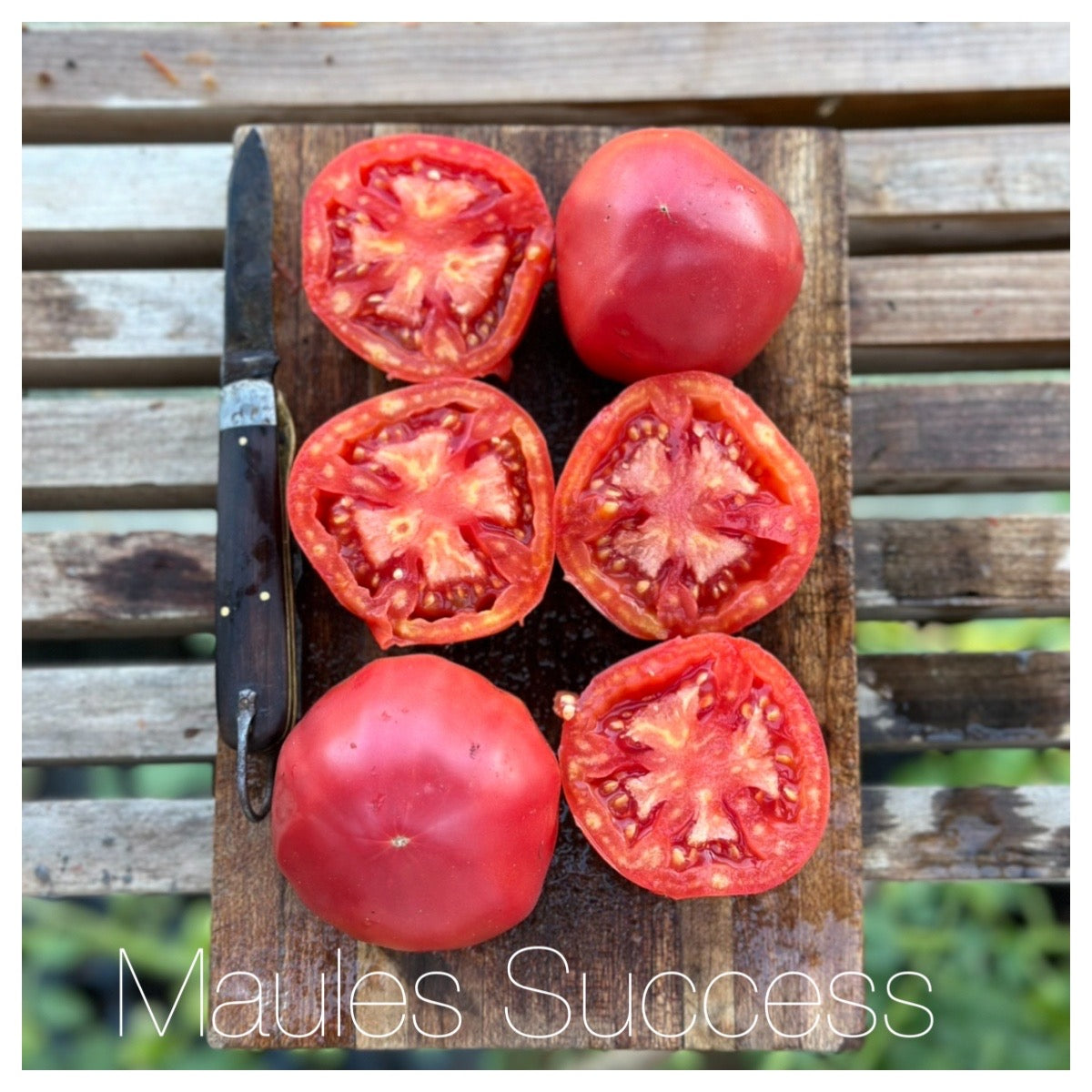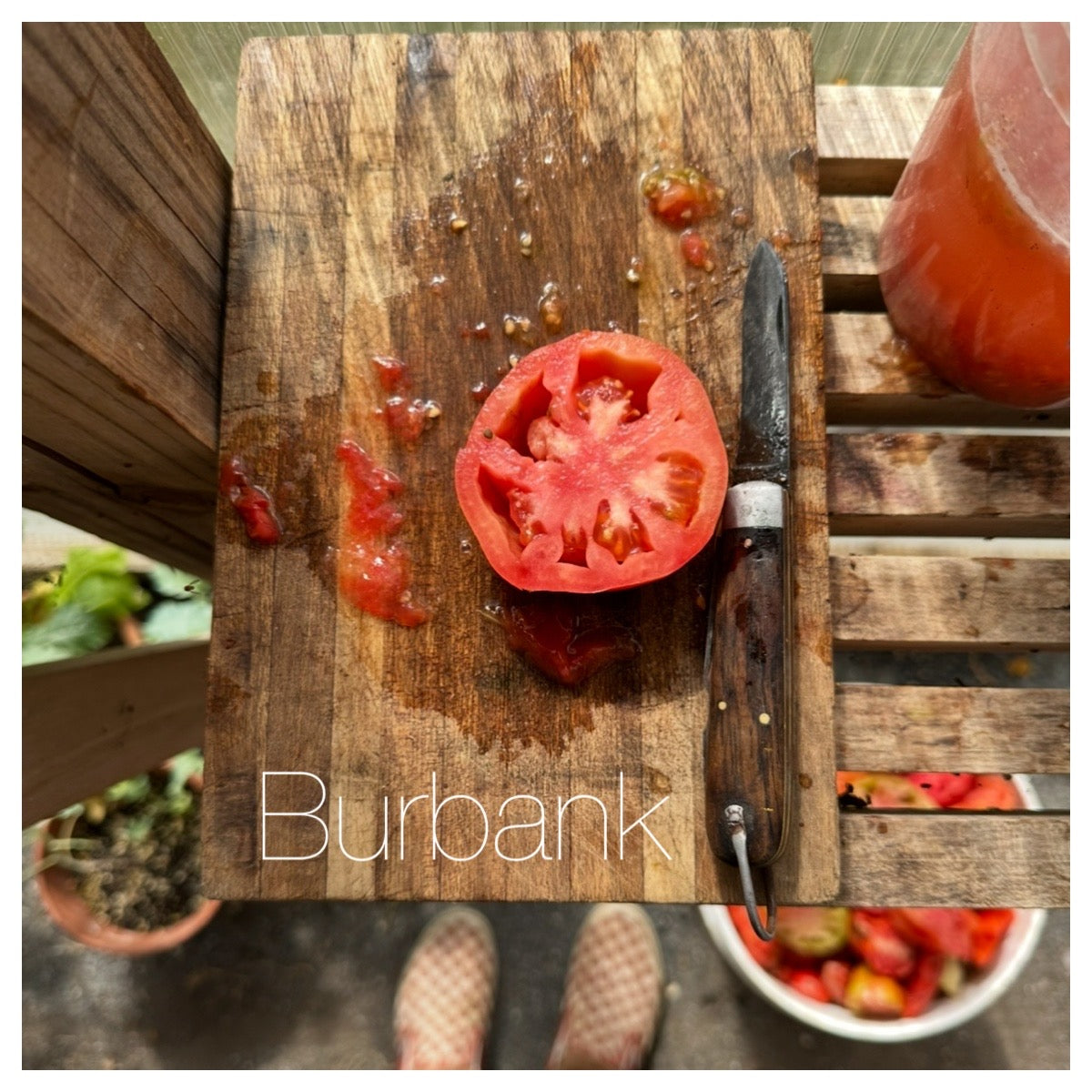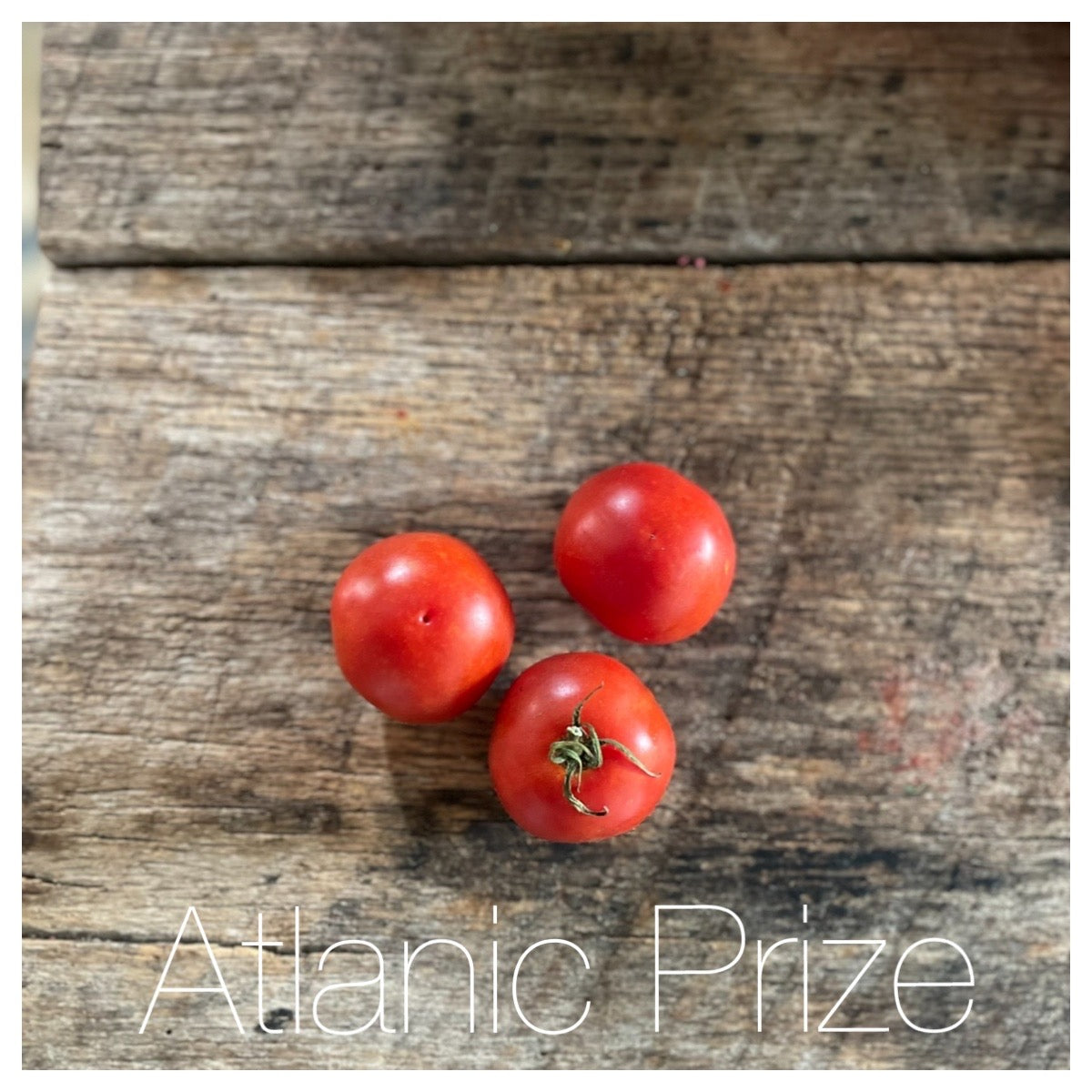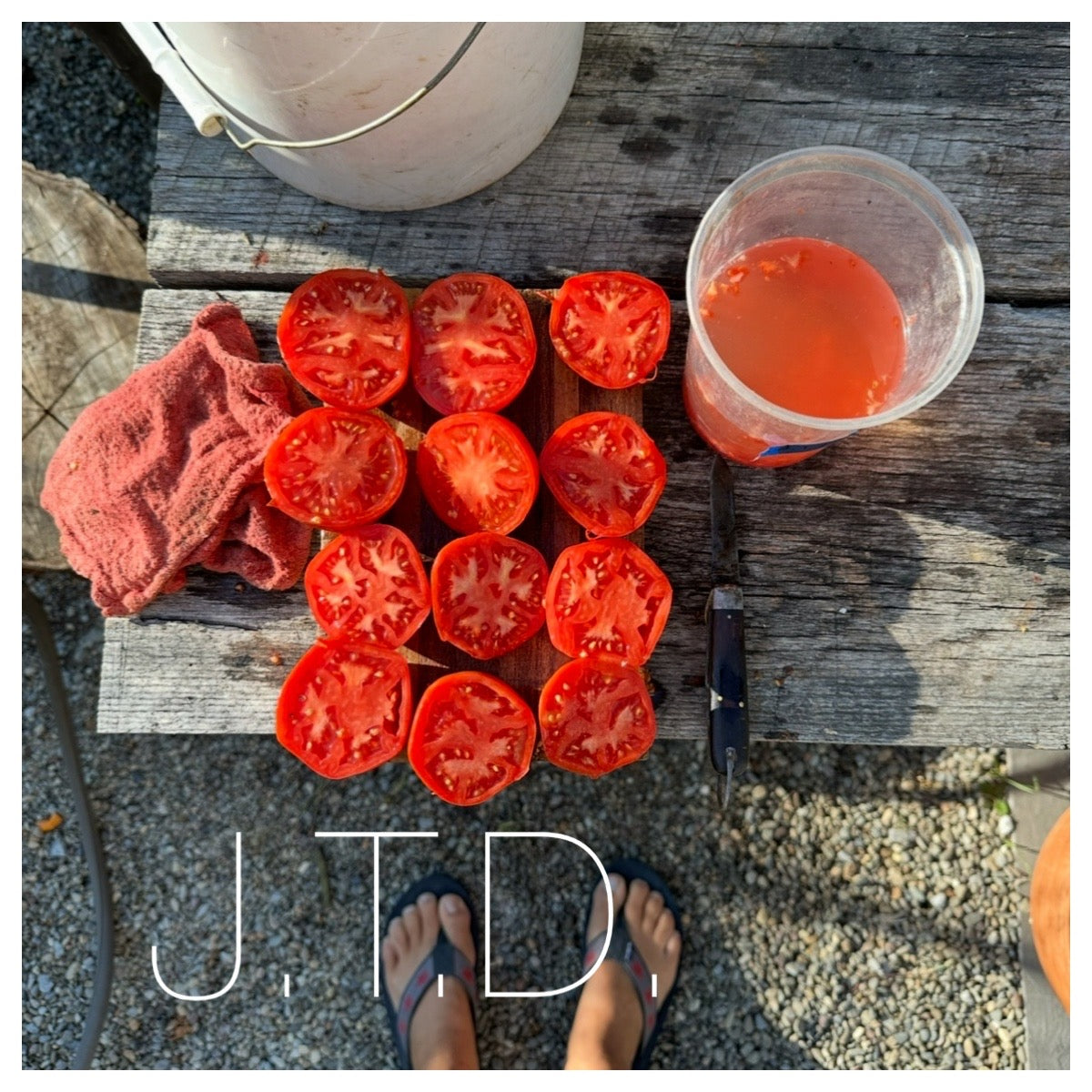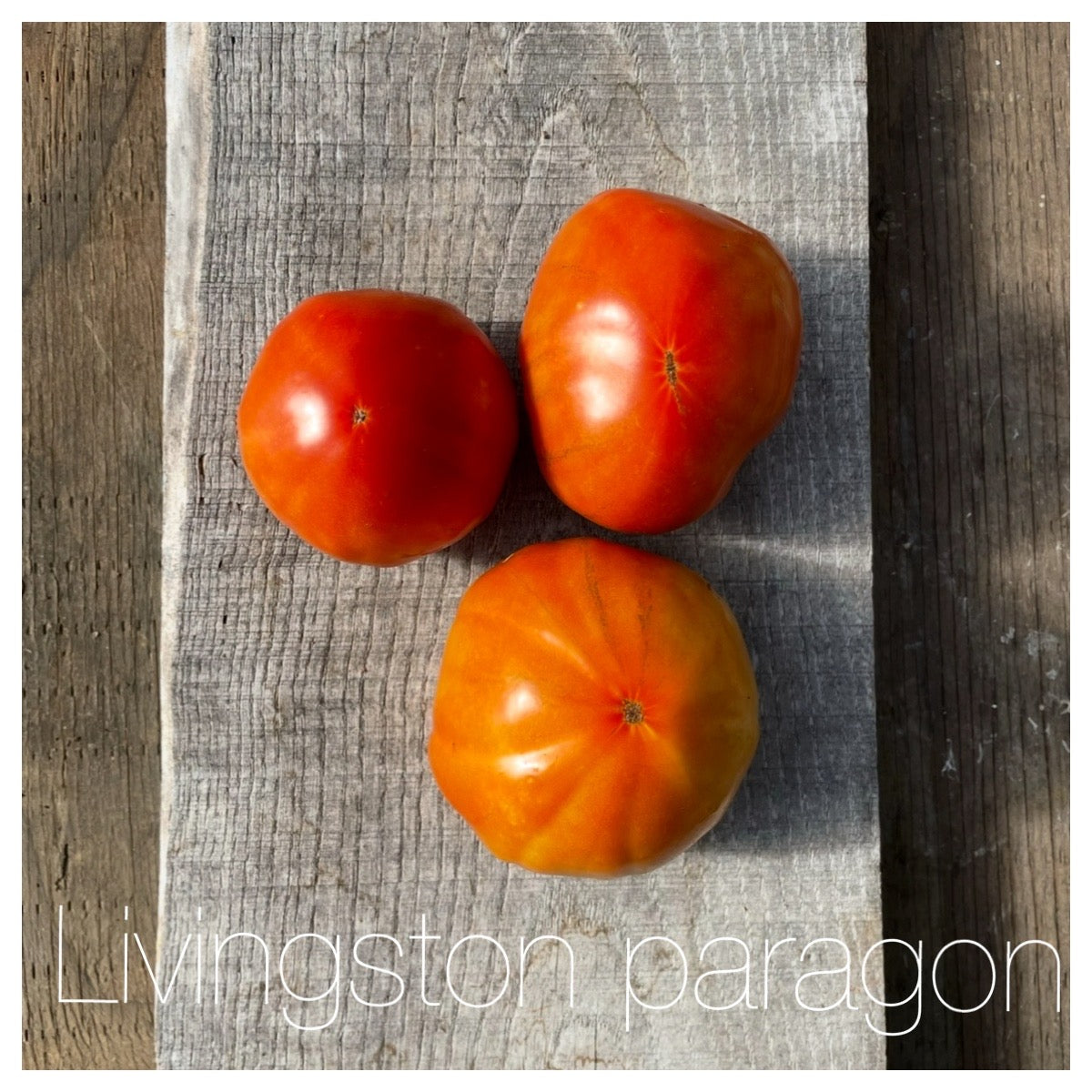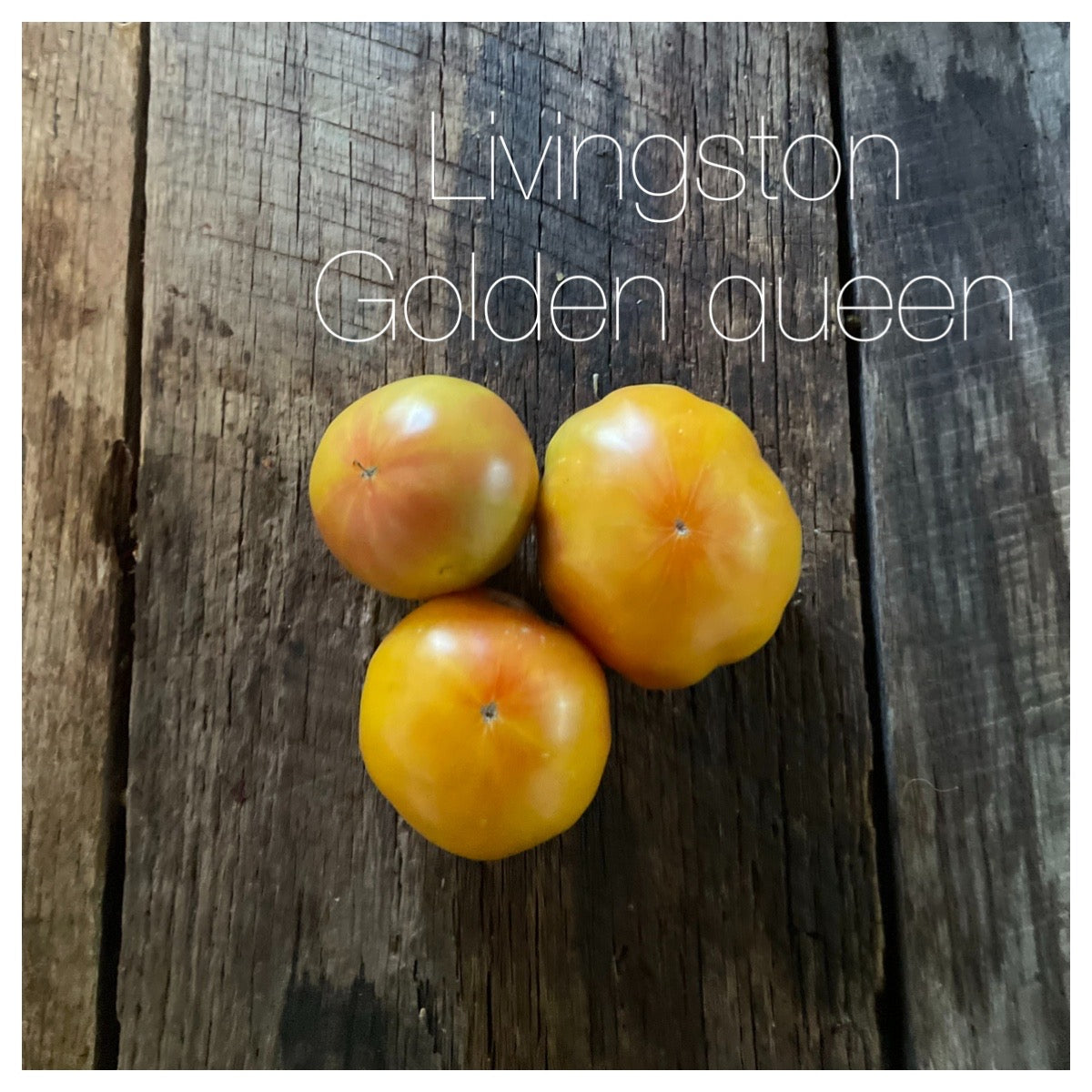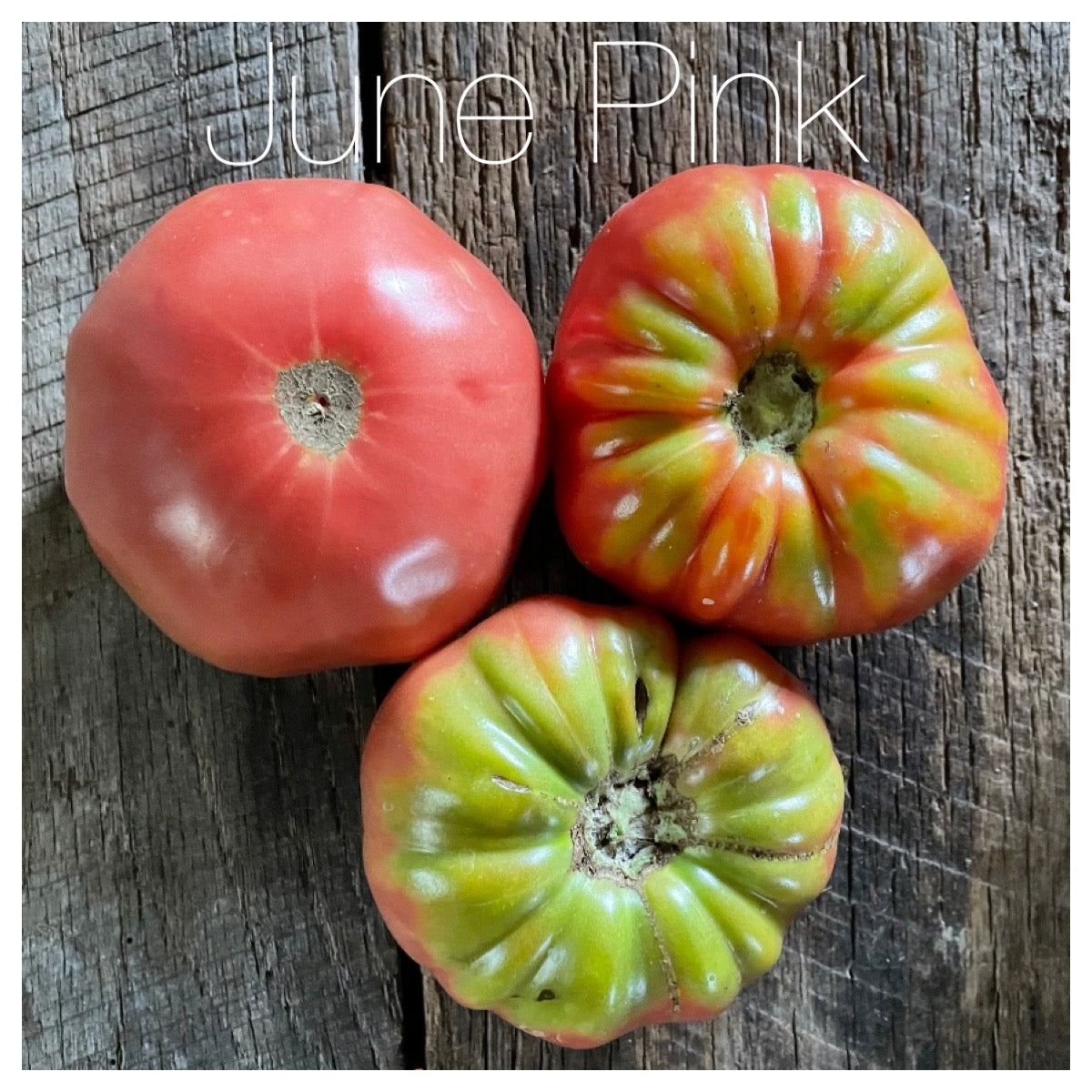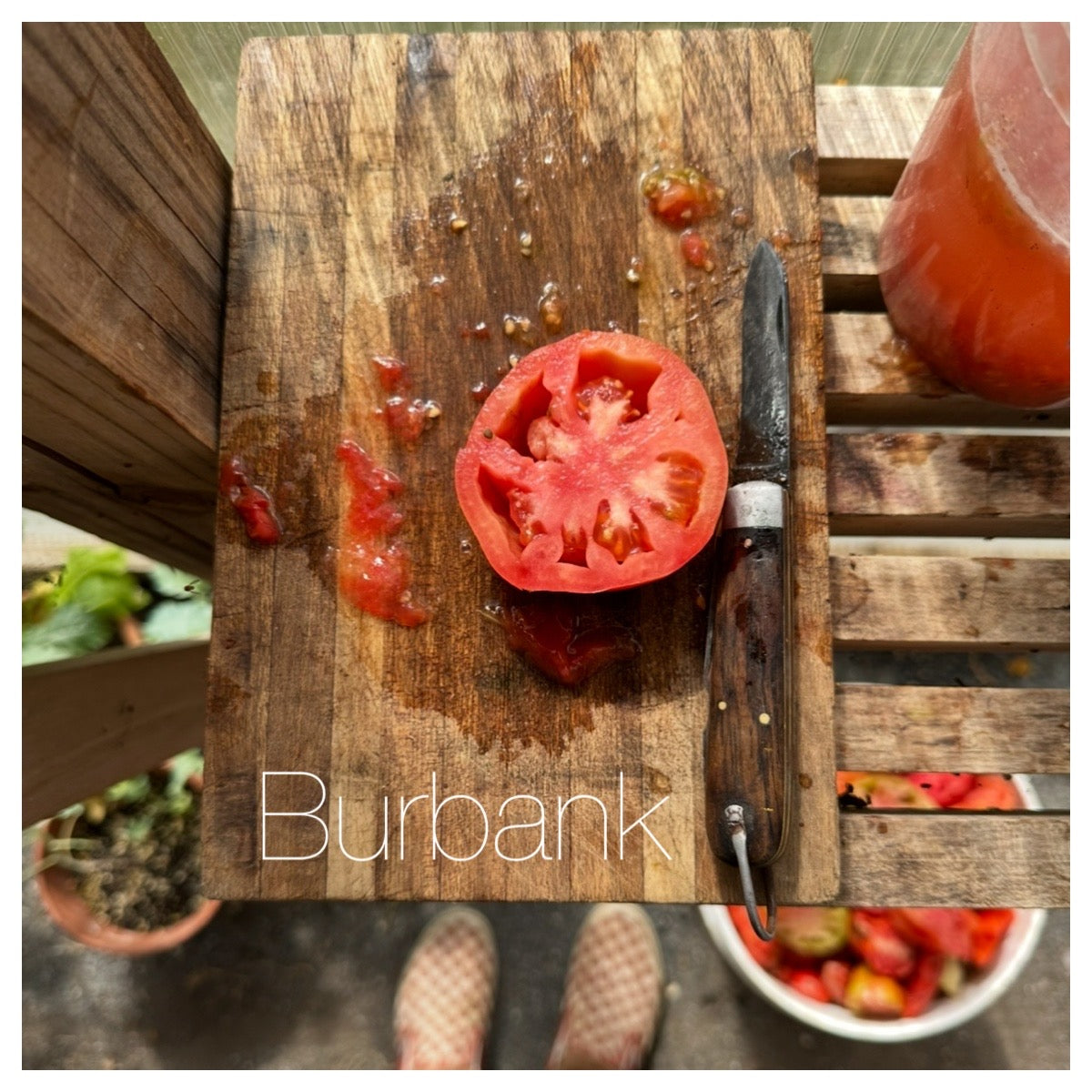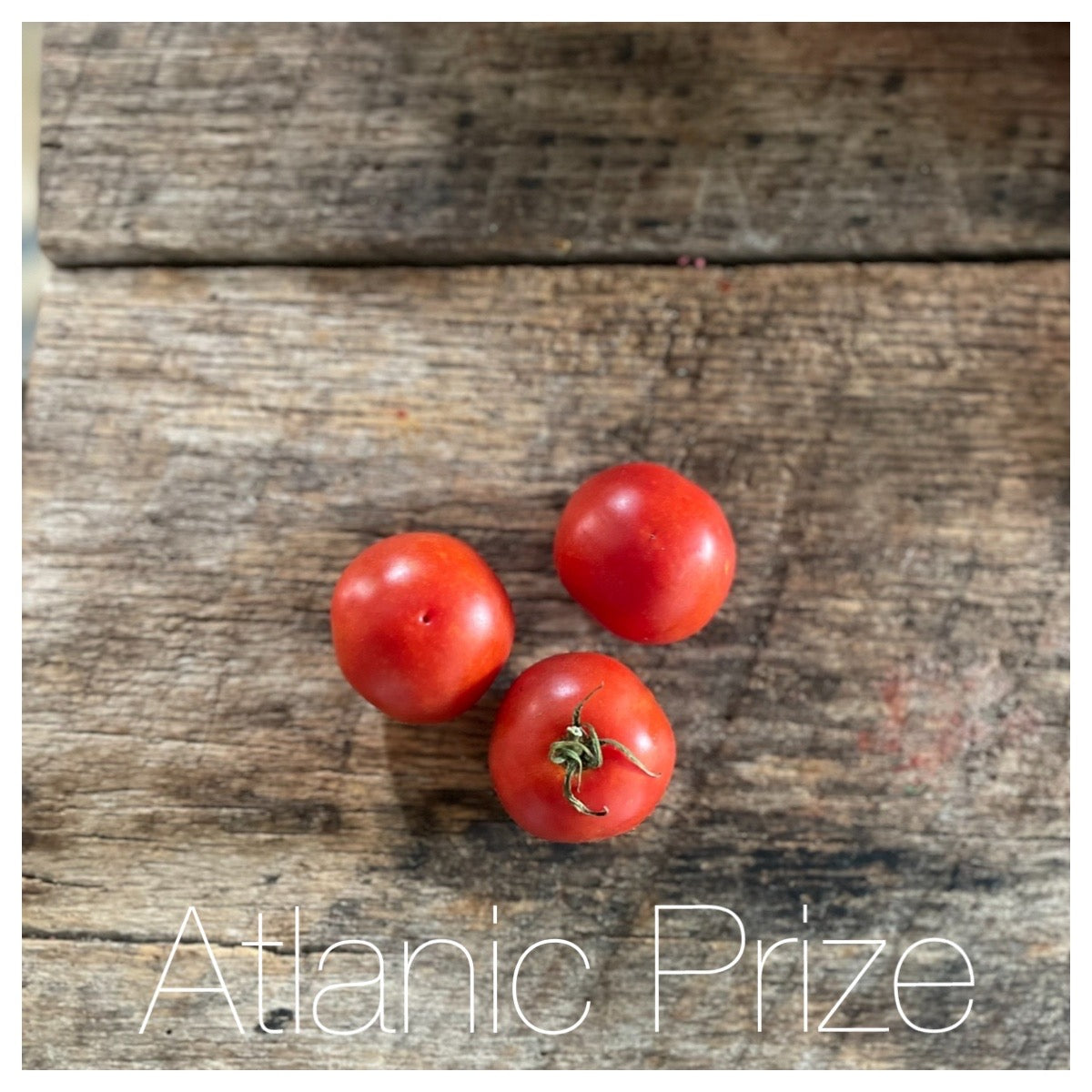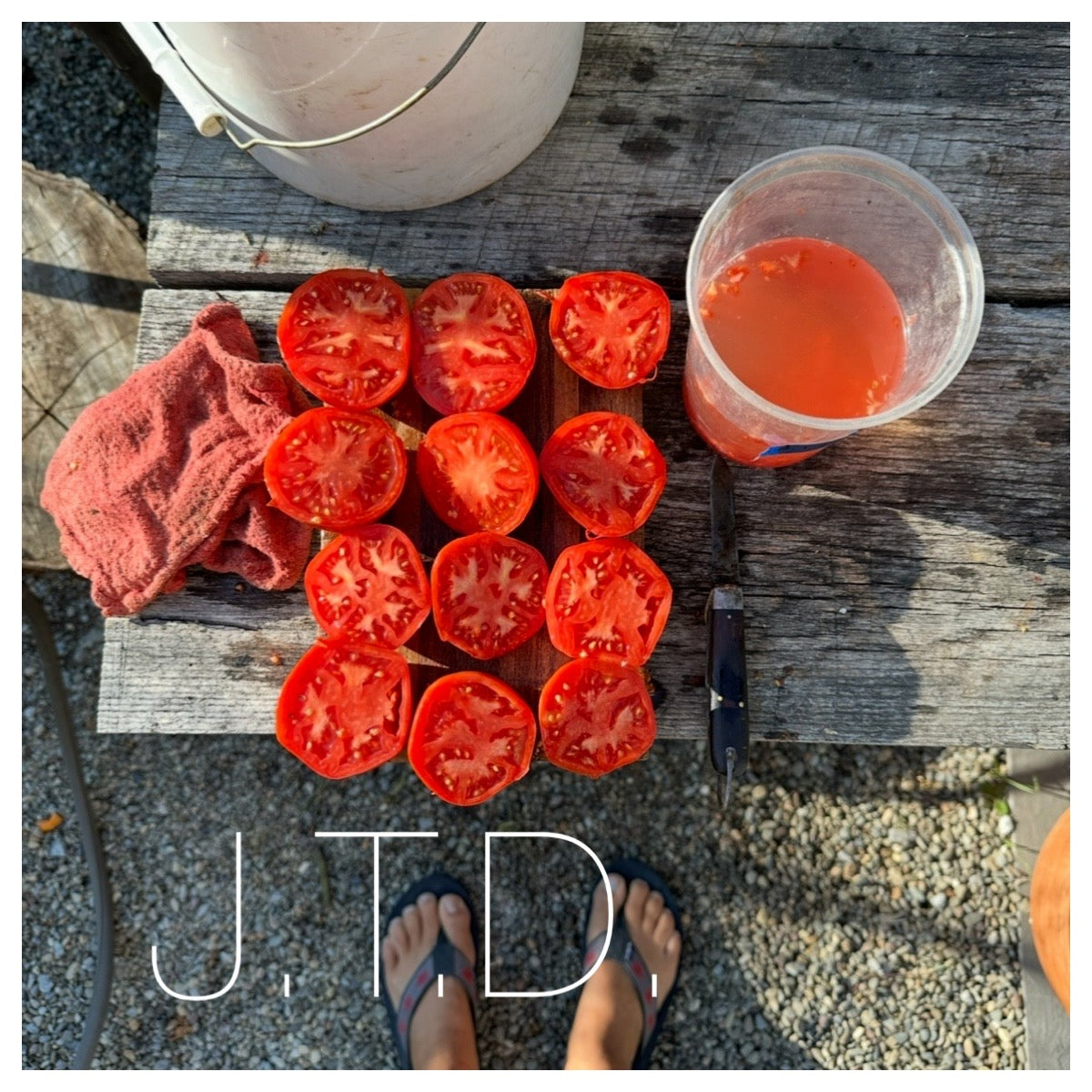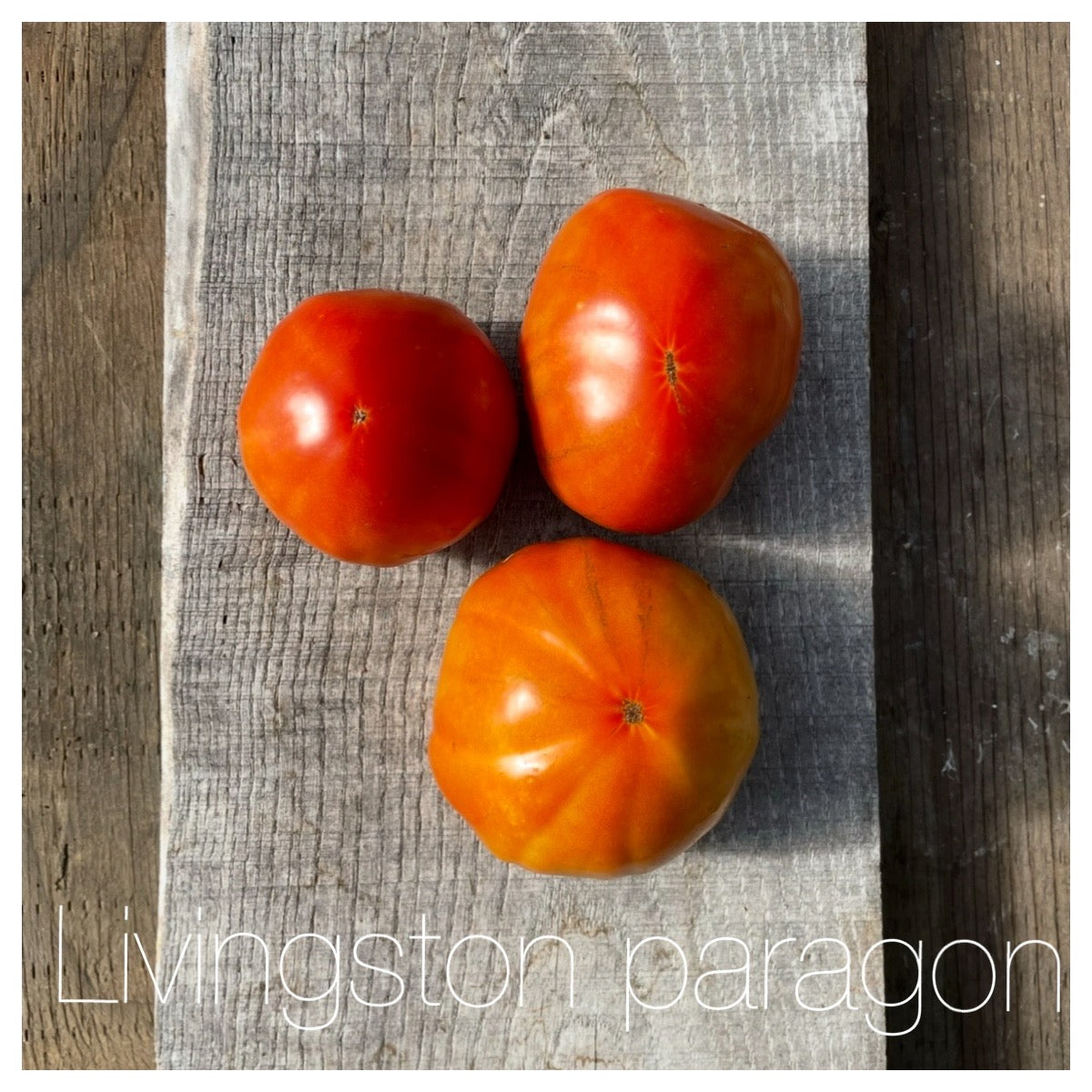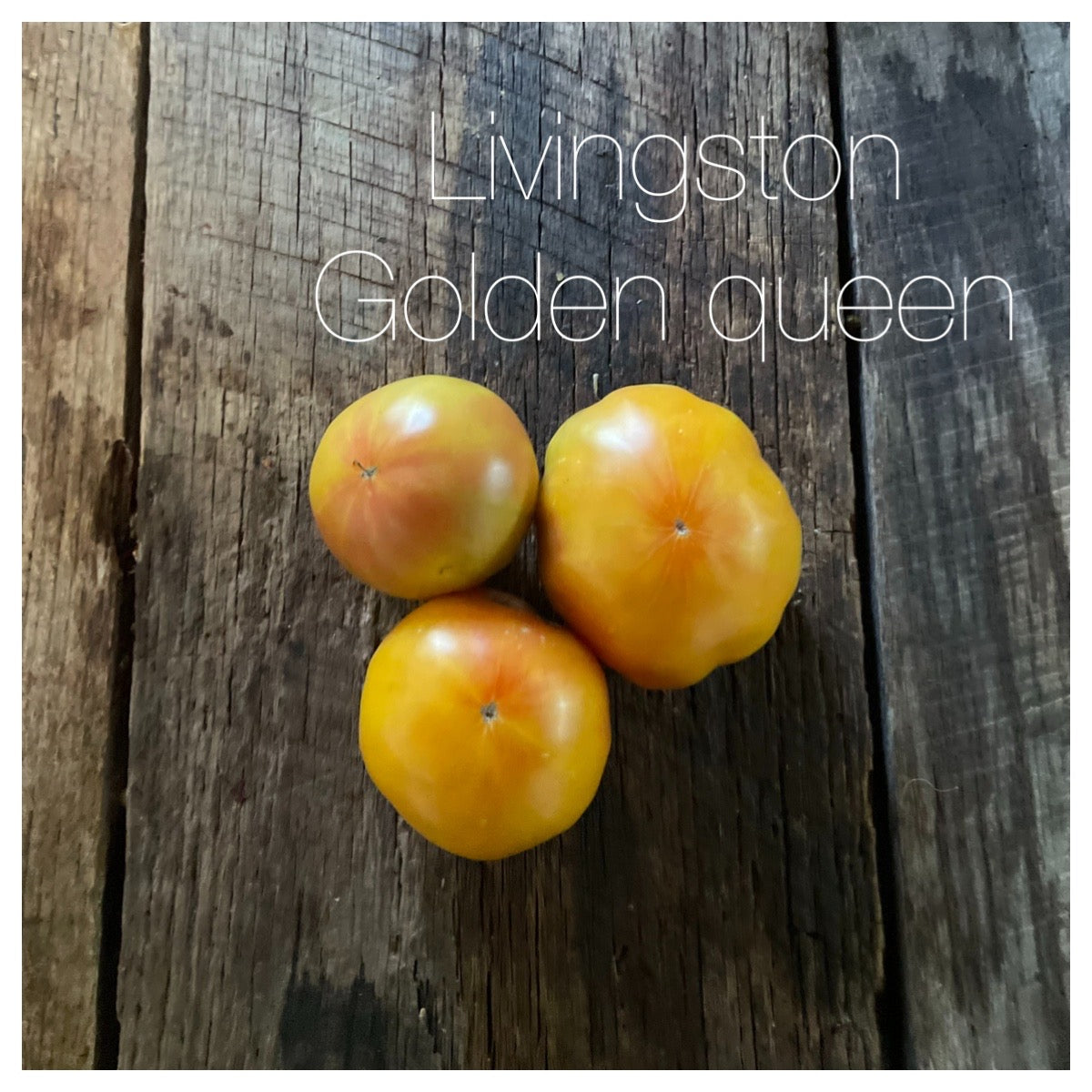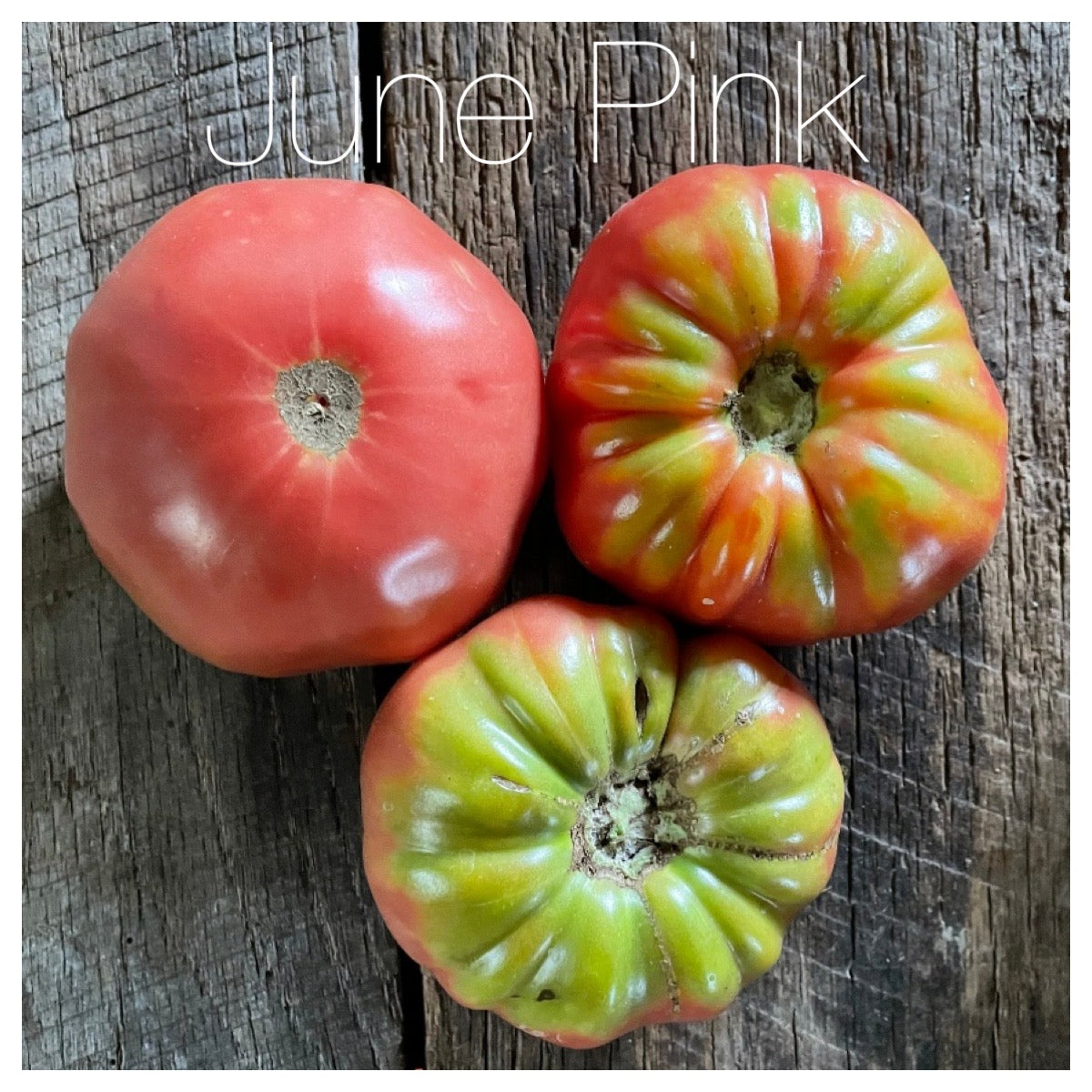Happy Cat Farm
The Americana Heirloom Tomato Seed Collection
The Americana Heirloom Tomato Seed Collection
Couldn't load pickup availability
The Americana Tomato Seed Collection
Long before we started to eat tomatoes on our sandwiches twelve months out of the year. We did something other, we eat with the seasons. You only ate tomatoes at the peak of season, when their flavor was at its most refined and decadent. Go buy a sandwich right now! Look at that tomato, it will be a pale, hard, and mealy pink things that is only a ghost of true tomatoes that we bend to in the gardens in the sweet fleeting season of summer. Picked green and gassed by some corporations to sell us more stuff. They came to us with good intent, from the genius breeding programs that made some of the best heirloom (or OP Open Pollinated.) Mostly clustered on the East Coast, with pockets in California. Names like Campbell Soup factory, Burpee seed, Burbank, Livingston.
from the late 1840s to the late1940s. For a span of almost 100 years, a sagacious period which was the high water mark for American wit, cleverness, and creativity. (All of these varietals are know as heirloom or OP Open Pollinated varietals. Meaning they where hybridized for 6 or 7 generations until they became stable and when saved will grow true to form of the parent tomato. Hybrid seeds are not stable and will not make the fruit or plant form you got the seeds from.)
From the end of Victorian splendor to the birth of modernity.
J.T.D
In 1887, J. T. (John Thompson) Dorrance developed a unique line of condensed soups for the Campbell company. The 'J.T.D.' tomato, named in honor of the man, was bred by the Campbell Soup Company for specific characteristics for growing in New Jersey and for its own factory use.
RUTGERS
It was developed in 1934 by Rutgers University's New Jersey Agricultural Experiment Station and the Campbell Soup Company's Riverton, New Jersey research facility. A hugely flavorful tomato that also was more resistant to rot than its predecessors, the Rutgers tomato became a staple ingredient of not only Campbell’s Soup, but other large companies including Hunt's and Heinz. It was popular on American dinner tables as the seed was grown by farmers nationally.
It was the most popular variety of tomato in the world, according to Thomas J. Orton, a professor in the department of plant biology and pathology at Rutgers University. The Rutgers tomato, at its peak, made up more than 60% of all commercial tomato sales.
Atlantic Prize
This heirloom classic was introduced in 1889 by Johnson & Stokes of Philadelphia. The tomato was developed several years earlier by a produce farmer in Atlantic County, New Jersey, hence the name.
Marglobe
The Marglobe tomato was developed in 1917 by Frederick J. Pritchard of the United States Department of Agriculture's Agricultural Experiment Station by crossing the Marvel and Globe tomatoes ("Marglobe" is a fusion of the two names). It was publicly released by the USDA in 1925, and was one of the first disease-resistant strains that also had a good resistance to Verticillium and Fusarium wilt. The Marglobe tomato is the parent of many tomato varieties, such as Rutgers.
Livingston
Paragon
"The Paragon Tomato," as its creator Alexander W. Livingston called it, was so-named because it was of, ". . . superior excellence in comparison with all others [tomato varieties] in the market at that time." Livingston's 'Paragon' is a first in several aspects.
It marked Mr. Livingston's first success at intentionally and carefully selecting for specific traits and stabilizing them over time to develop a new variety. This selection process that he described as being "pure discovery on his part," and which he called his, "New Method," resulted in the 'Paragon' being the very first, "perfectly and uniformly smooth tomato ever introduced . . ."
Introduced in 1870 as Livingston's first release in a long line of unique and commercially interesting tomato varieties, 'Paragon', like all new discoveries, "produced a revolution." In this case, it was the last piece needed to begin the commercial tomato industry in America.
Livingston Golden Queen
Characteristically described as the "Queen of all the Yellows," "Of superior flavor ...," "... it is solid, always smooth, entirely free from ridges." The fruit are early, a good size, beautiful and excellent for slicing.
Introduced by Alexander W. Livingston in 1882, the standard catalog description over the years have been fairly consistent. In their 1893 seed catalog, they describe it as follows:
"A real good yellow sort of first-class quality, and its superior flavor has brought it into general favor as a table fruit. It is solid, smooth, entirely free from ridges, large in size, ripens up early, and is a very handsome sort; in fact, by far the most beautiful yellow variety ever sent out: the larger and riper fruit are frequently tinged with red at the blossom end.
June pink
'June Pink' has vigorous, productive, regular leaf vines that produce fruit that are pink in color, smooth skinned, flattened-globe to oblate in shape, and weigh up to one pound each.
Introduced by Johnson & Stokes in 1906. In their seed catalog that year they wrote:
"The June Pink Tomato in habit of growth is similar to the Earliana. The plant is neat and compact, branching freely, with fruit hanging in clusters of six to ten fruit both in the crown and at the forks of the branches. Under exactly the same conditions as given Sparks' Earliana and Chalk's Jewel, the June Pink yielded as much fruit as either, and the vines after the crop had been harvested were greener and brighter, and showed no tendency to blight.
Earliana
Developed by George Sparks of Salem, New Jersey. It was first offered commercially in 1900 by Johnson and Stokes of Philadelphia. Almost identical to 'June Pink' except for the redder-pink color and shorter period of production. The 'Earliana' tomato was developed at the turn-of-the-century as growers attempted to bring the earliest tomato to market. It was first offered commercially in 1900 by Johnson and Stokes.
Burbank
Developed by Luther Burbank around 1915. The only variety he grew for canning. Our TomatoFest seeds produce compact, determinate plants that yield heavy crops of medium-sized 3-4 inch, red, round slicing tomatoes. Very good well rounded and complex tomato flavors with a good amount of acidity. Tested very high in amino acids.
MAULES SUCCESS
The vines are strong and vigorous setting good amounts of red, oblate fruit that range from five to thirteen ounces and have a good, "red tomato" flavor.
Originated in 1897 by Mr. M. M. Miesse, a market gardener and tomato specialist from Lancaster, Ohio. It was introduced commercially in 1900 by William Henry Maule Seed Company under the name of "Maule's 1900," and in the following year renamed 'Maule's Success'. In his 1902, Silver Anniversary Seed Annual, Mr. Maule writes the following about the 'Success' tomato:
"Success Tomato, offered for the first time in my 1900 catalogue under the name of "Maule's 1900," found a place for itself at once in the high esteem of every tomato grower who planted it.
Hope you really enjoy this deep dive into American Tomato Breeding.
We are only releasing 25 of these so tell your friends.
Share
